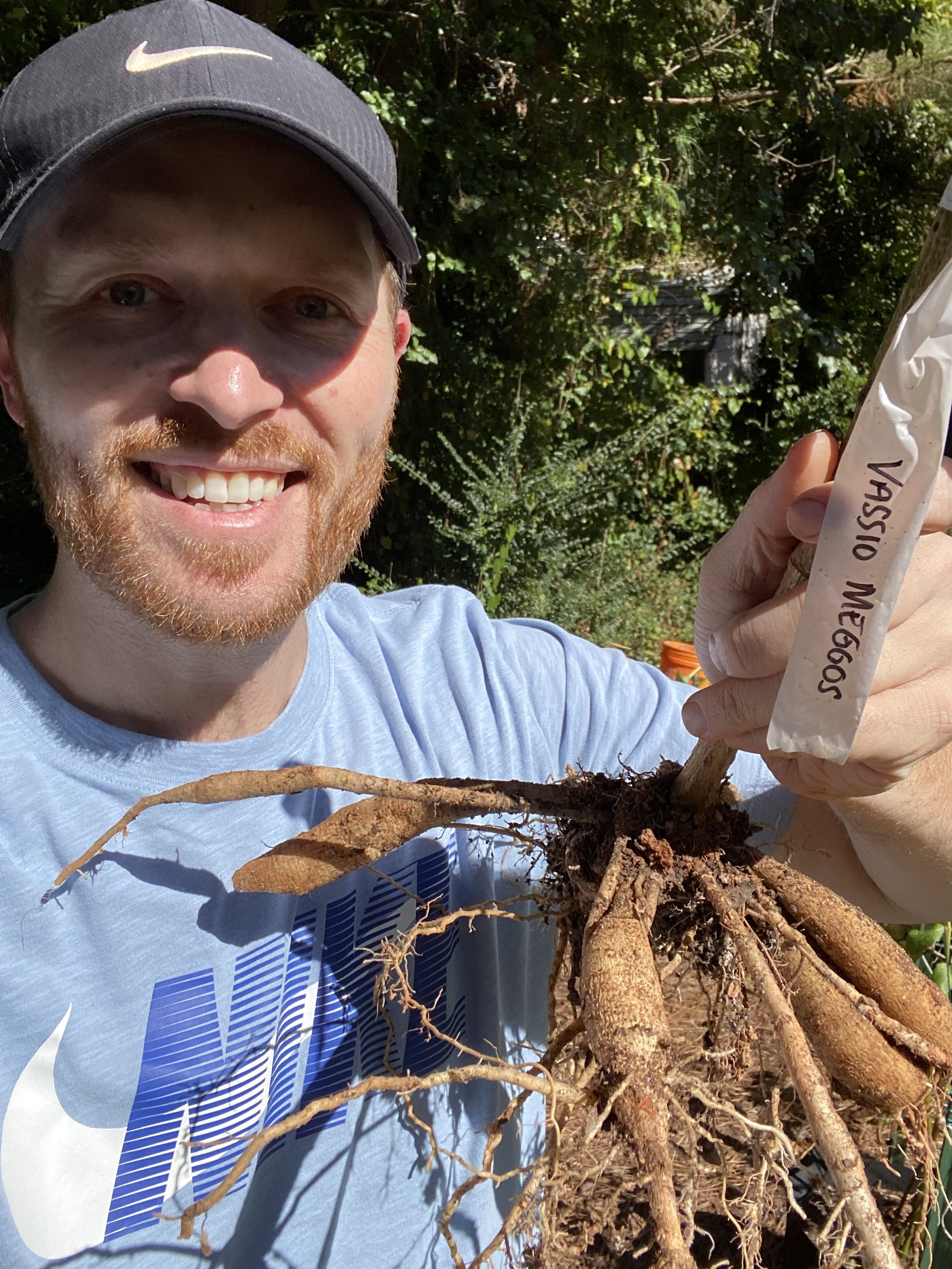The Tuber Source Matters
Alrighty y'all, let's talk Big Box and Imported Tubers for a second. Many people have a LOT to say about tubers from Home Depot, Lowes, Costco, or online importers like Eden Brothers, Breck's, and the like.
So, I'm going to dive into my big box store buys and share some of what you can expect. I'm also going to share what I've come to learn in the process of growing dahlias and why I focus on giving my business to small growers.
These days, around 90% of my stock comes from my collection, and about 10% comes from other independently owned, small US farms and suppliers. But, when I first started, sometimes I would come across a bargain that I couldn’t pass up.
I’ve had some good buys on dahlias from big box stores. But I’ve also had many problems from the big-box buys. So, let’s start with why you DON'T want to buy dahlias at big box stores, why online importers can be risky, and what you can do to minimize potential issues.
Broken necks
Whether from machine-run harvesting or damage during transit, a dahlia tuber barely attached or detached to the crown is dead weight. This is probably the biggest headache buyers experience from big box stores and online dahlia clump importers. Once the neck is broken, the tuber is no good. Remember that every dahlia, whether a clump or a single tuber, needs the main three components: the body, the neck, and the eye. The neck is the transporter of nutrients from the body to the eye; without that, it's just wasted material.
Minimize The Risk: If you have a big clump with tubers dangling like crystals from a chandelier, just cut them off to minimize the risk of rot before planting. Inspecting and cleaning up your big box and import tubers is a must.
Mislabeling
This is a big one, as dahlias come in many colors, forms, heights, and bloom times. In Dahlia land, color is not just color; a name is not just a name. It can be a real headache if you have your heart set on a particular variety or the wrong dahlia for your zone, cut flower needs, or garden design.
Minimize The Risk: The only way to increase the risk of error is to buy individual tubers from quality independent growers. And while there is no Dahlia farm or supplier that is perfect, the likelihood of error in variety is GREATLY decreased with independent growers and farms.
Dried-Out, Moldy, and the G-word
Many, not all, dahlias available through Dahlia importers and big box stores are often dried out to the point where they just aren't fit for the garden, or on the opposite end; they are growing mold. But worst of all is the dreaded “G-word…” GALL! Leafy gall and crown gall have become much bigger problems in the last few years, with tubers from Europe to the United States and Canada having a much higher infection rate.
Leafy gall affects dahlias once they have been planted. It will stunt dahlias early on, creating clusters of unnecessary leaf-like growth, expending all the energy of the plant while creating nothing of use. Crown gall starts to affect dahlia tubers as they age and eventually can cause dahlias not to produce any blooms. Early in the season, it will often look like a brain, baby cauliflower, or dozens upon dozens of abnormal white growths, all trying to grow simultaneously. If you spot this in your garden, do not hesitate to immediately dig up the tuber, dig out the soil in that area, and throw the tuber in the trash. Do NOT deposit the tuber or soil into your compost pile, and the disease spreads through the soil which can affect other plants.
Minimize The Risk: Consider growing new or higher-risk stock in a separate raised bed or plant them in grow bags for the first year. This will give you the chance to inspect and monitor the growth while, keeping the rest of your stock safe and sound.
The Upside
And now that you may be scared to death, don't worry, Dahlia lovers; it’s not all doom and gloom. Remember that many tubers from big box stores aren't all bad, and you can usually find them at an incredible deal, even if they are mangled or damaged. And... there are LOTS of small dahlia growers out there that grow dahlias because they love them as we do at Restoring Eden. Small farms and dahlia farmers have the knowledge, bandwidth, and margin to focus more closely on the quality of the dahlias they grow, which prevents most, if not all, of the aforementioned problems.
In short, Big box tubers are a deal and average around $3-$6 per tuber clump. Again, you run a significantly higher risk of incorrect varieties, rot, gull, and mold. All that being said, that is not the story with MOST of what you will buy. This can be a great entry point, especially if you're new to dahlias. As aforementioned, inspect and clean the clumps, and consider if you might have a separate introduction space for the first year of growing.
My advice? If you have the stock you care about and can not refuse the deal, choose to grow new "imported" editions in a separate garden bed or in grow bags for the first year to avoid the risk of the rest of your stock getting infected with viruses or diseases. If you don’t want to risk it, play it safe and purchase from small growers all over the country, trade with friends, or join a local Dahlia society where you can foster new relationships and increase your stock together.
Below is an unboxing video of some tubers I bought at a big box store.

